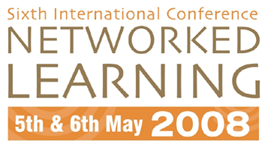

New Collaborative and Cooperative Just-in-Time Training Methods at the Workplace
John B. Stav, Roger Bergh
Faculty of technology, Sør-Trøndelag University College,
Norway John.B.Stav@hist.no, Roger.bergh@hist.no
Hariklia Tsalapatas
Telematic Network Center, University of Thessaly, Greece, htsalapa@uth.gr
Abstract
Most citizens in Europe have got some competence about “down hill skiing” due to broadcasting of various championships on TV. However, only a limited amount of them have obtained the required practical knowledge on how to do it! Thus, the interpretation of the word “down hill skiing” depends on each person’s competence and knowledge. Similar phenomena occur in mechanical industry fabrication processes where the descriptions used within welding specifications frequently describe technical items and relations that are related to different technological levels and experiences.
Utilizing just-in-time mapping and transfer of competence and knowledge during the outsourced production process improve the follow up of a typical mechanical industry production process. The lack of semantic interoperability in the context of technical communication during such a cooperation and collaboration process, are addressed by utilizing new visual communication and collaboration technologies in combination with new training methodologies. Indeed, formalized methodologies for transfer of on the job obtained knowledge between companies and their contractors have not been developed due to the lack of semantic interoperability.
Many industrial companies try to reinforce their competitiveness in the world market by transferring their internally developed competence, know how and working processes to Small and Medium sized Enterprises that are recipients and contractors of outsourcing contracts within the global production flow. Formalized methodologies for transfer of on the job knowledge between companies and their contractors have not been developed due to lack of semantic “interoperability” in the context of technical communication. Semantic interoperability in outsourcing processes targets one central issue: “Are the production processes and deliveries from the contractor in accordance with the company’s requirements and specifications of quality?” This paper outlines flexible system solutions for just-in-time transfer of mechanical industry production process know-how at the workplace that requires detailed transfer of technical communication processes to small and medium sized companies. The solution utilize the strength, flexibility and speed of oral communication to avoid semantic interoperability issues related to technical communication, by mixing state of the art high quality video conferencing solutions, digital document cameras and digital blackboard technology. The article includes a detailed description of how to interconnect the various audio-visual devices, and an outline of the Cyclic Corrective Action method. This system solution has recently been used to offer successful transfer of welding competence in Norway.
| About NLC |
2008 Conference Papers
| Conference Committee| Keynote
Speakers
| Papers from previous NL conferences |Research Seminars| Current Conference
| Sponsors | Contact
|
